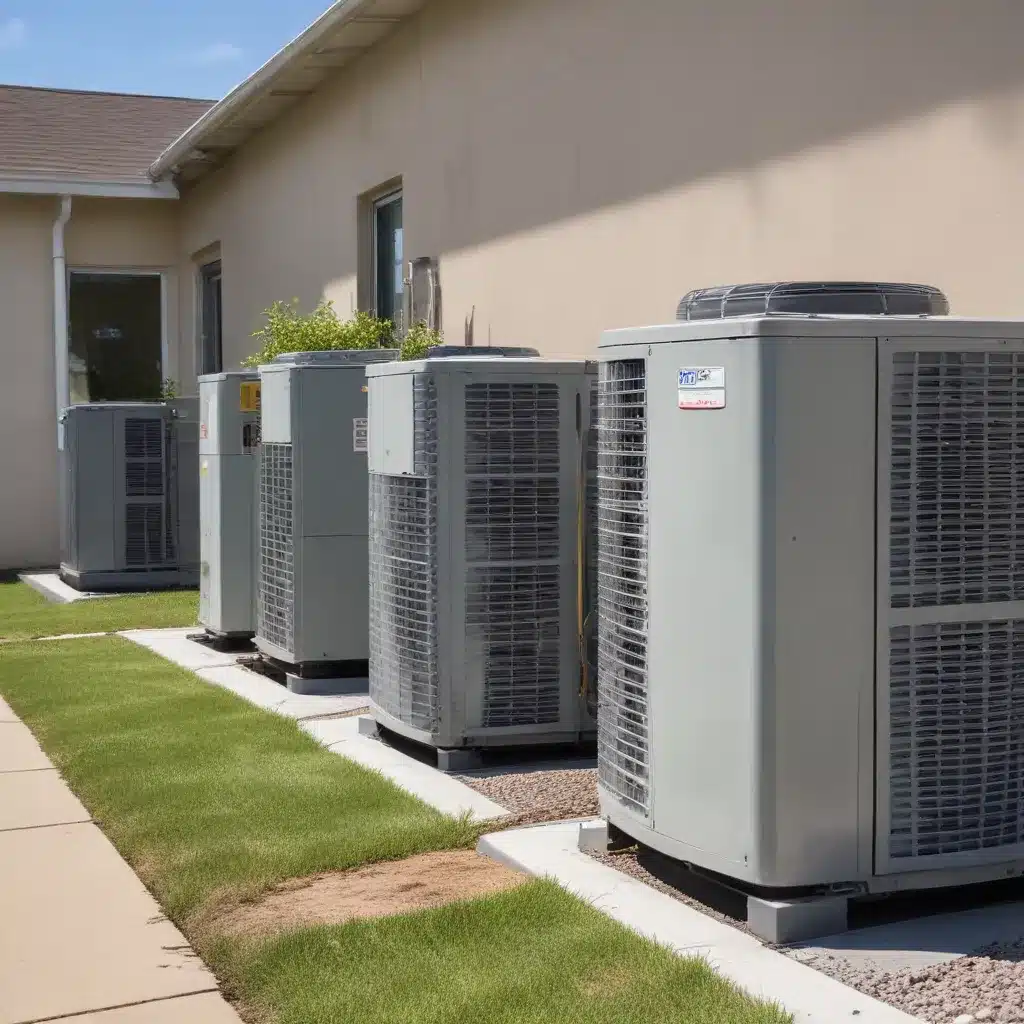
A Journey Through the Evolution of Refrigerant Technology
As an experienced air conditioning specialist, I’ve had the privilege of witnessing the remarkable transformation taking place in the HVAC industry. The shift towards more environmentally friendly refrigerants, commonly known as A2L refrigerants, has been a fascinating journey that I’m eager to share with you.
For years, the HVAC landscape has been dominated by traditional refrigerants that, while effective, contributed significantly to environmental challenges like ozone depletion and global warming. However, the tides are turning, and a new era of sustainable cooling solutions is upon us.
A2L refrigerants, with their low global warming potential and improved safety profiles, are ushering in a new age of climate-conscious HVAC systems. These refrigerants represent a remarkable advancement in addressing the environmental impact of our industry, and I’m excited to guide you through the intricacies of this transition.
Understanding the A2L Refrigerant Classification
At the heart of this evolution are the A2L refrigerants, which stand out for their unique characteristics. Classified as “mildly flammable,” these refrigerants strike a delicate balance between safety and environmental performance. Unlike their more volatile predecessors, A2L refrigerants require significantly more energy to ignite, and even if ignited, they burn slowly and are likely to self-extinguish.
This low flammability, coupled with their substantially reduced global warming potential, makes A2L refrigerants a compelling choice for modern HVAC systems. For instance, refrigerants like Puron Advance boast a 75% reduction in GWP compared to traditional options like R-410A. This alignment with evolving environmental regulations, such as the American Innovation and Manufacturing (AIM) Act, has propelled the widespread adoption of these eco-friendly alternatives.
Navigating the Regulatory Landscape
The transition to A2L refrigerants is not only driven by environmental concerns but also shaped by a rapidly evolving regulatory framework. The Environmental Protection Agency’s (EPA) Significant New Alternatives Policy (SNAP) program plays a crucial role in evaluating and approving these low-GWP refrigerants for specific applications. Several A2L refrigerants have already received SNAP approval, paving the way for their widespread use.
Simultaneously, the AIM Act, passed in 2020, mandates an 85% nationwide phasedown in high-GWP hydrofluorocarbon (HFC) refrigerants by 2036. This ambitious target aligns with international agreements like the Montreal Protocol and the Kigali Amendment, which aim to reduce the use of ozone-depleting and high-GWP refrigerants.
These regulatory shifts are not merely bureaucratic hurdles but rather a concerted effort to drive the HVAC industry towards a more sustainable future. As an air conditioning specialist, I’ve witnessed firsthand how these policies have spurred innovation and the development of cutting-edge HVAC systems designed to harness the benefits of A2L refrigerants.
Ensuring Safety and Compatibility
Of course, the transition to A2L refrigerants is not without its challenges. Proper training and handling protocols are essential to ensure the safe installation and maintenance of these systems. Technicians must undergo specialized education to understand the unique safety aspects of A2L refrigerants, including their mild flammability, personal protective equipment (PPE) requirements, and leak detection procedures.
Ensuring compatibility between existing HVAC equipment and the new generation of A2L-compatible systems is another crucial consideration. Fortunately, the industry has risen to the occasion, with manufacturers designing A2L refrigerants to closely match the operating parameters of the refrigerants they replace. This minimizes the need for extensive system redesigns, making the transition more seamless for homeowners and businesses.
Embracing Energy Efficiency and Sustainability
Beyond the regulatory drivers, the allure of A2L refrigerants lies in their tangible benefits for both the environment and energy efficiency. The significantly lower global warming potential of these refrigerants translates to a meaningful reduction in greenhouse gas emissions, contributing to the global fight against climate change.
But the advantages don’t stop there. A2L refrigerants are also designed to enhance the energy efficiency of HVAC systems, leading to lower electricity bills and a smaller carbon footprint for homeowners and businesses. This synergy between environmental stewardship and cost savings makes A2L refrigerants an attractive option for those seeking sustainable and cost-effective cooling solutions.
Navigating the Transition with Expertise
As an air conditioning specialist, I understand the importance of guiding homeowners and businesses through this transition to A2L refrigerants. It’s my mission to ensure that our clients not only benefit from the latest advancements in HVAC technology but also feel confident in the safety and reliability of their systems.
By collaborating with our team of trained technicians and leveraging our deep understanding of A2L refrigerants, we can help you navigate this journey seamlessly. Whether it’s selecting the right HVAC system, ensuring proper installation and maintenance protocols, or addressing any concerns you may have, we are here to provide the expertise and support you need.
Embracing the Future of HVAC
The transition to A2L refrigerants is not just a passing trend but a fundamental shift in the way we approach climate-conscious cooling solutions. As an air conditioning specialist, I’m proud to be part of an industry that is actively embracing the challenge of reducing our environmental impact while maintaining the highest standards of safety and efficiency.
By investing in HVAC systems designed for A2L refrigerants, you’re not only ensuring the comfort and well-being of your home or business but also contributing to a more sustainable future. Together, let’s embark on this exciting journey and unlock the full potential of these eco-friendly cooling technologies.
If you’re ready to explore the world of A2L refrigerants and learn how they can enhance your HVAC system, I encourage you to visit our website at https://www.hamiltonaircon.co.uk/. Our team of experts is here to guide you every step of the way, providing the insights and support you need to make an informed decision.